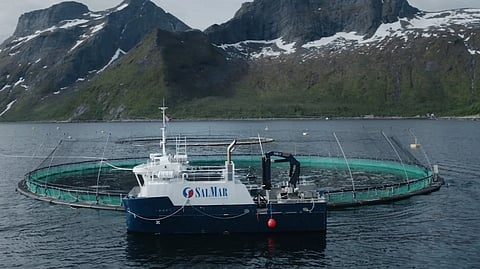Salmon farmer SalMar's Q2 2025 profit hit by low prices
Norwegian salmon farmer SalMar has reported a financially weak second quarter for 2025, with its operational profit hit by poor price achievement for its fish. The results came despite what the company describes as very good biological development, which it says lays a strong foundation for increased volumes and better cost performance in the second half of the year.
The group’s operational earnings before interest and tax (EBIT) for the three months ending June 30 was NOK524 million ($49 million). The company stated that the quarter was financially weak, as expected, due to a high proportion of downgraded fish, particularly in Central Norway, which negatively impacted the prices it could command. Total harvest volume for the group in the quarter was 64,500 tonnes.
Despite the weak financial outcome, the company highlighted its strong operational performance. “In short, we are pleased with the biological development during the quarter,” said Chief Executive Frode Arntsen. “This lays the foundation for increased volume and positive cost development in the second half of the year.”
SalMar enters the third quarter with a record-high biomass for the season and has increased its full-year harvest guidance by four thousand tonnes to a total of 298,000 tonnes.
During the period, the company has also been active on the strategic front, completing its merger with Wilsgård, a move it described strengthens its position in Northern Norway. It also issued two new green bonds totalling NOK2 billion to increase its access to capital for sustainable development.
Looking ahead, SalMar expects a positive cost development in the second half of the year as it begins harvesting new generations of fish. The company also noted that the share of superior quality fish has increased significantly since July. While the first half of the year has been marked by lower salmon prices due to increased volumes, SalMar said it continues to experience strong demand and expects lower global supply growth in the second half of 2025.


